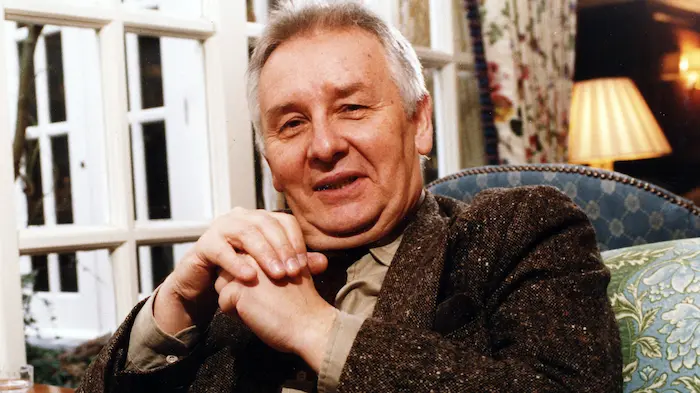Henryk Górecki’s Symphony No. 3, also known as the “Symphony of Sorrowful Songs,” stands as a monumental work in contemporary classical music. Premiered in 1977, it remained relatively obscure until the early 1990s when a recording by the London Sinfonietta, featuring soprano Dawn Upshaw, brought it to international attention. This article explores the symphony’s structure, themes, historical context, and its profound impact on listeners and the classical music landscape.
I. Historical Context
Górecki’s Background
Henryk Mikołaj Górecki was born in 1933 in Poland. He emerged as a significant figure in the Polish avant-garde movement during the 1950s and 1960s. Górecki’s early works were marked by a modernist and experimental style, but his compositional approach evolved, embracing a more accessible and emotionally direct language.
Poland in the 1970s
Poland in the 1970s was a country under communist rule, facing political unrest and economic challenges. The oppressive regime and the cultural climate influenced many artists, including Górecki. His Symphony No. 3 reflects a deep engagement with Polish history and the collective memory of suffering and resilience.
II. Structure of the Symphony
First Movement: Lento—Sostenuto Tranquillo Ma Cantabile
The symphony begins with a slow, meditative movement. It opens with a somber orchestral introduction, setting a tone of profound introspection. The first movement features a lament sung by a soprano, using a text from the 15th century. The text is a prayer from a mother to the Virgin Mary, expressing her sorrow and pleading for divine intervention.
Second Movement: Lento E Largo—Tranquillissimo
The second movement is the emotional heart of the symphony. It is based on a message inscribed on the wall of a Gestapo cell in Zakopane during World War II. The text, written by an 18-year-old girl, expresses a poignant mix of fear, hope, and faith. The music is hauntingly beautiful, with the soprano voice soaring above a backdrop of lush orchestration.
Third Movement: Lento—Cantabile-Semplice
The final movement returns to a medieval Polish folk song. It is a mother’s lament for her lost son. The music here is simpler and more direct, yet it carries a profound emotional weight. The movement concludes the symphony on a note of quiet resignation and spiritual transcendence.
III. Themes and Symbolism
Sorrow and Loss
The overarching theme of the symphony is sorrow. Each movement deals with the pain of loss and the enduring human spirit in the face of suffering. The texts chosen by Górecki are poignant reflections of personal and collective grief.
Faith and Redemption
Despite the pervasive sorrow, the symphony is imbued with a sense of faith and redemption. The religious texts and the meditative quality of the music suggest a search for solace and spiritual healing. Górecki’s use of simple, chant-like melodies evokes a sense of timelessness and universality.
Historical Memory
Górecki’s Symphony No. 3 serves as a musical memorial to the tragedies of Polish history. The references to medieval and World War II texts anchor the work in specific historical contexts, yet the emotions it evokes are universal. The symphony invites listeners to reflect on the enduring impact of history on human experience.
IV. Musical Analysis
Melodic Simplicity
Górecki employs a style characterized by melodic simplicity and repetitive structures. The melodies are often based on folk tunes or chant-like motifs. This simplicity enhances the emotional directness of the music, allowing the listener to engage deeply with the expressive content.
Harmonic Language
The harmonic language of the symphony is tonal, but it incorporates dissonances that heighten the sense of tension and release. Górecki’s use of modal harmonies and slow harmonic rhythms creates a meditative, almost hypnotic atmosphere.
Orchestration
The orchestration of Symphony No. 3 is rich yet restrained. Górecki uses the orchestra to create a dense, sonorous backdrop for the soprano voice. The careful balance between the vocal and instrumental parts ensures that the text remains clear and impactful.
V. Reception and Legacy
Initial Reception
When Symphony No. 3 premiered in 1977, it received a mixed response. Some critics appreciated its emotional depth and simplicity, while others dismissed it as overly sentimental. The symphony did not achieve widespread recognition until the 1992 recording by the London Sinfonietta.
Breakthrough Recording
The 1992 recording, conducted by David Zinman and featuring soprano Dawn Upshaw, became a commercial success. It topped classical music charts and introduced Górecki’s music to a global audience. The recording’s success was a testament to the universal appeal of the symphony’s themes and its emotional resonance.
Impact on Contemporary Music
Górecki’s Symphony No. 3 has influenced a wide range of composers and musicians. Its blend of modernist techniques with traditional forms and its emotional immediacy have inspired many to explore similar approaches. The symphony’s success also contributed to a renewed interest in accessible, emotionally direct music within the contemporary classical landscape.
See Also: 6 Classical Music Pieces Inspired by Swans: All You Want to Know
VI. Conclusion
Henryk Górecki’s Symphony No. 3, “Symphony of Sorrowful Songs,” is a profound and deeply moving work. Its exploration of sorrow and redemption, rooted in specific historical and cultural contexts, has universal appeal. The symphony’s success and enduring impact attest to the power of music to convey the deepest human emotions. Through its simple yet profound melodies and its meditative quality, Symphony No. 3 invites listeners to reflect on the enduring themes of loss, faith, and hope.

